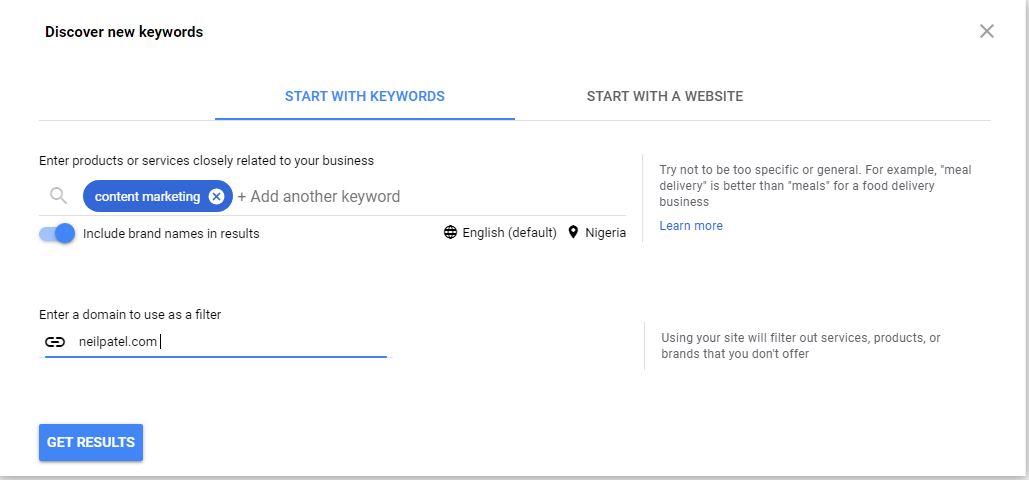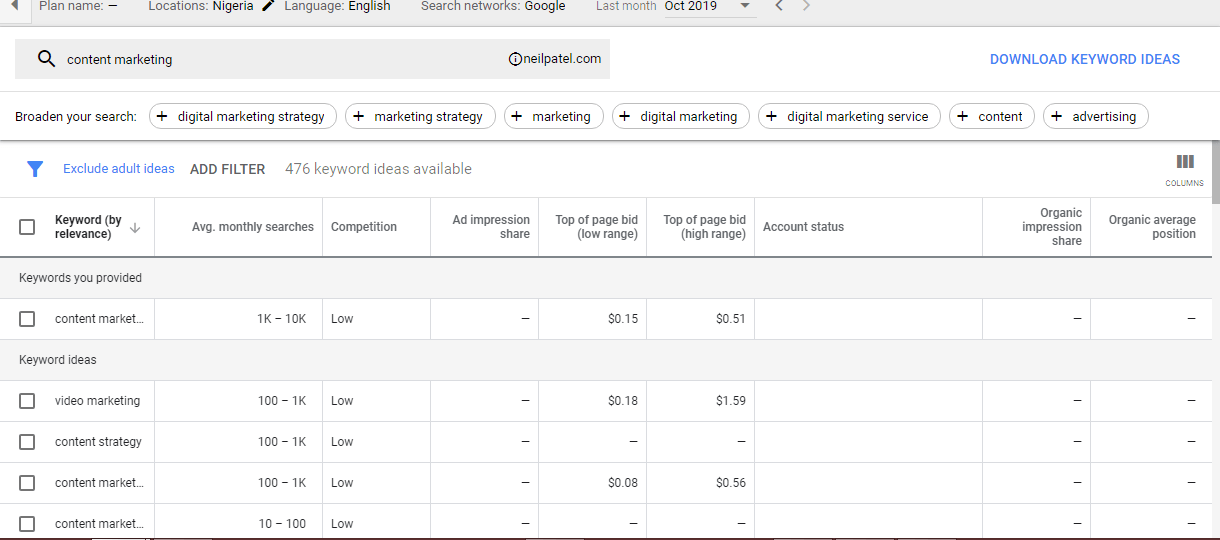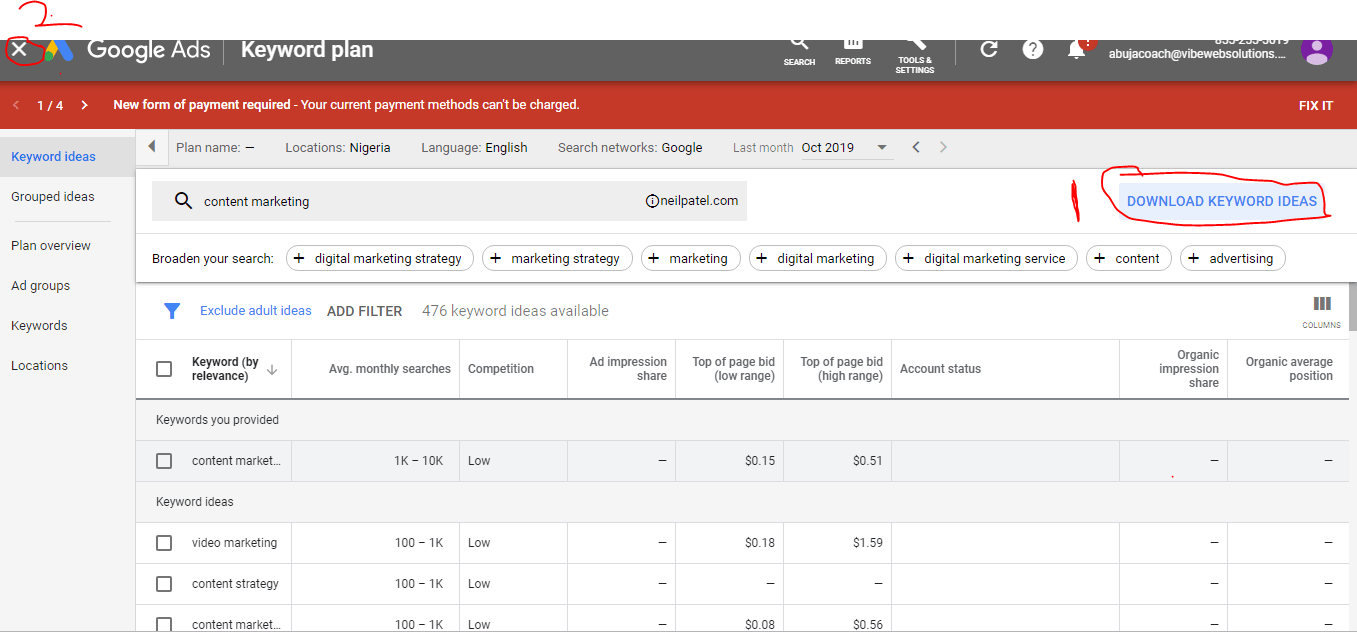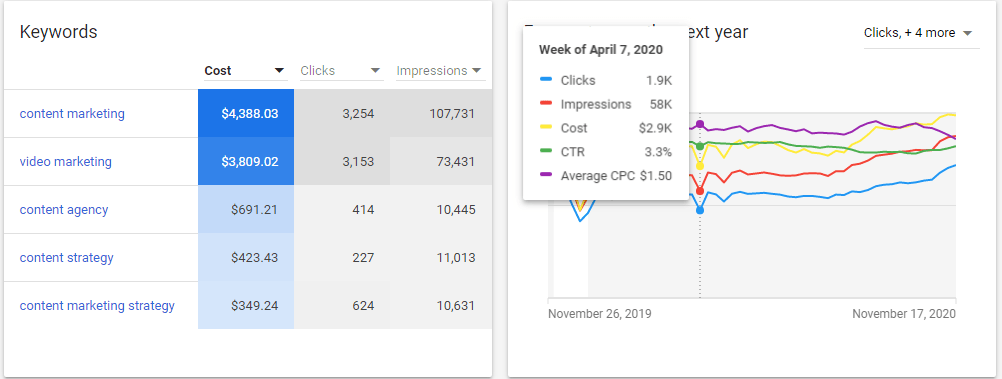To get ahead of the pack, Google keyword planner is a tool which is available to advertisers who have ran campaigns at least once on the platform. For first timers, it might not be available immediately, but be rest assured that after the running your first online campaign via google Ads, access would be granted to this amazing tool.
Keyword Research
This is an important aspect of getting the right keywords for your Google search Ads. It is the process of actively searching for the most sought after Keywords in a particular niche and gives you an idea on how viable it would be if used.
Keywords go a long way in determining how well you rank on SEO and plays a crucial role for Content Targeting for Display Ads and more of search Ads, both of Google.
According to Wikipedia, Keyword research is a practice search engine optimization (SEO) professionals use to find and research alternative search terms that people enter into search engines while looking for a similar subject.
Search engine optimization professionals research additional keywords, which they use to achieve better rankings in search engines. Once they find a niche keyword, they expand on it to find similar keywords.
What is Google Keyword Planner?
Simply put, Google keyword planner is a tool which was specifically designed to help you get the search volume of a particular keyword, coupled with the ability to show future search volume and forecasts.
This tool gives you an idea of how well a particular set of keywords have been searched for at a particular time, also giving suggestions of similar keywords that are performing well in terms of their search volume.
Let us get right into it then.
Step one: Sign into your google ads account via ads.google.com
Step two: Click on ‘tools and settings’, then ‘keyword planner’
Step Three: choose ‘discover new keywords’. This helps you use the Google Keyword planner to get insight to one or a number of keywords that are of interest to you.
Even more interesting is the fact that you can filter keywords via a website, to check how those particular keywords have been performing in terms of paid search.
Keeping in mind that this tool works better for search Ads, than trying to find out keywords a website is ranking on.
If you do not wish to run your search through a particular website, kindly focus on keyword alone. By so doing, you are searching generally and can filter by country, date and other metrics.
From the above image, I can see that content marketing as the main keyword got between 1-10k searches on the website which I filtered it through.
READ ALSO: Google+ Lead Generation Guide | 8 Effective Ways To Generate Leads
Competition
The ‘competition’ is low and this means that not an awful amount of people are bidding for this particular keyword, which translates to a cheaper bid if I decide to use it for my search Ad on google.
Top of page bid
As can be seen from the google keyword planner, it would take between $0.15- $0.51 for my search Ad to appear on the top page of Google’s search engine result page (SERP). Quite cheap I might add.
Keyword Ideas
Having seen the search results from the keyword as filtered through the website, I can now proceed to download them and use same for future forecasts.
This can be done by clicking on the ‘download keyword ideas’ to be uploaded later. Afterwards, close the search bar
Search Volume and Forecasts
This option on the google keyword planner helps to give future predictions on already existing keywords, drawing its data from what has happened with the keyword in the recent past and market trends at certain periods of the year.
To get this, ensure you already downloaded keyword ideas, as this would make it easier for you to add them all at once and see results.
READ ALSO: 5 Common Google AdWords Mistakes To Avoid That Might Cost Your Business
First step: Click on ‘get search volumes and forecasts’, then ‘upload a file’
Second step: Upload the already downloaded file and you are good to go.
Here, You get an idea of the average clicks that keyword has gotten over a period. Furthermore, You can see the click through rate of said keyword to give an idea of how likely people are to click on links on the content








